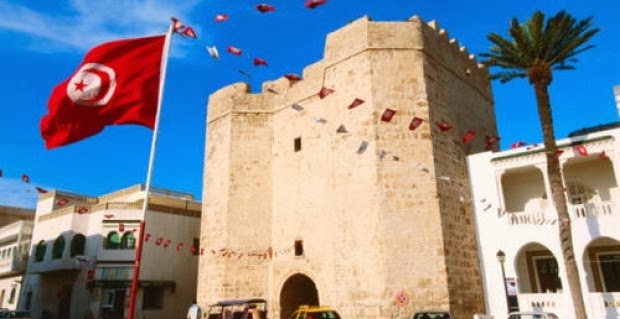1.
Location/Geography/Environment-The official name
and year of origin of this country, location, climate and major geographical
features of the country. (Be sure to include Maps and a Flag!)
a.
Tunisia, at the northernmost part of Africa, sticking
out toward Sicily to mark the division between the eastern and western
Mediterranean Sea. Twice the size of South Carolina, it is bordered on the west
by Algeria and by Libya on the south. Coastal plains on the east rise to a
north-south escarpment that slopes gently to the west. The Sahara Desert lies
in the southernmost part. Tunisia is more mountainous in the north, where the
Atlas range continues from Algeria.
b.
Land area: 59,985 sq mi (155,361 sq km); total
area: 63,170 sq mi (163,610 sq km)
c.
Tunisia's climate is temperate in the north,
with mild rainy winters and hot, dry summers. Temperatures in July and August
can exceed 40°C. Winters are mild with temperatures rarely exceeding above 20°C
(exception is the south-west of the country).
d.
Terrain: mountains in north; hot, dry central
plain; semiarid south merges into the Sahara
e.
Elevation extremes:
i.
lowest point: Shatt al Gharsah -17 m
ii.
highest point: Jebel ech Chambi 1,544 m
f.
Natural resources: petroleum, phosphates, iron
ore, lead, zinc, salt
2.
Social Structure–What racial, ethnic, class
structures are present?
a.
Ethinicity/race: Arab-Berber 98%, European 1%,
Jewish and other 1%
b.
Languages: Arabic (official, commerce), French
(commerce)
c.
Literacy Rate: 74.3%
d.
The Tunisian government estimates that 75 to 80
percent of Tunisians are middle-class, a consequence of steadily rising living
standards over the last 20 years. The upper-middle class of Tunisia – the economic
and political elite – is made up of the old aristocratic families.
Western-educated civil servants, political leaders, prominent businesspeople,
and large landowners. The lower-middle class – a quickly growing group –
consists of low-level civil servant, schoolteachers, small business owners,
skilled service and industrial workers, and independent farmers. The working
class is made up of subsistence farmers and agricultural workers. The day
laborers, unemployed, and underemployed found in rural areas and shantytowns
near urban centers belong to Tunisia’s lowest social class
3.
Politics- what type of government runs this
country?
a.
The government that currently runs this country
is Republic.
4.
Religion/Ideology-what type of religious
activity is present?
a.
Islam (Sunni) 98%
b.
Christian 1%
c.
Jewish and other 1%









